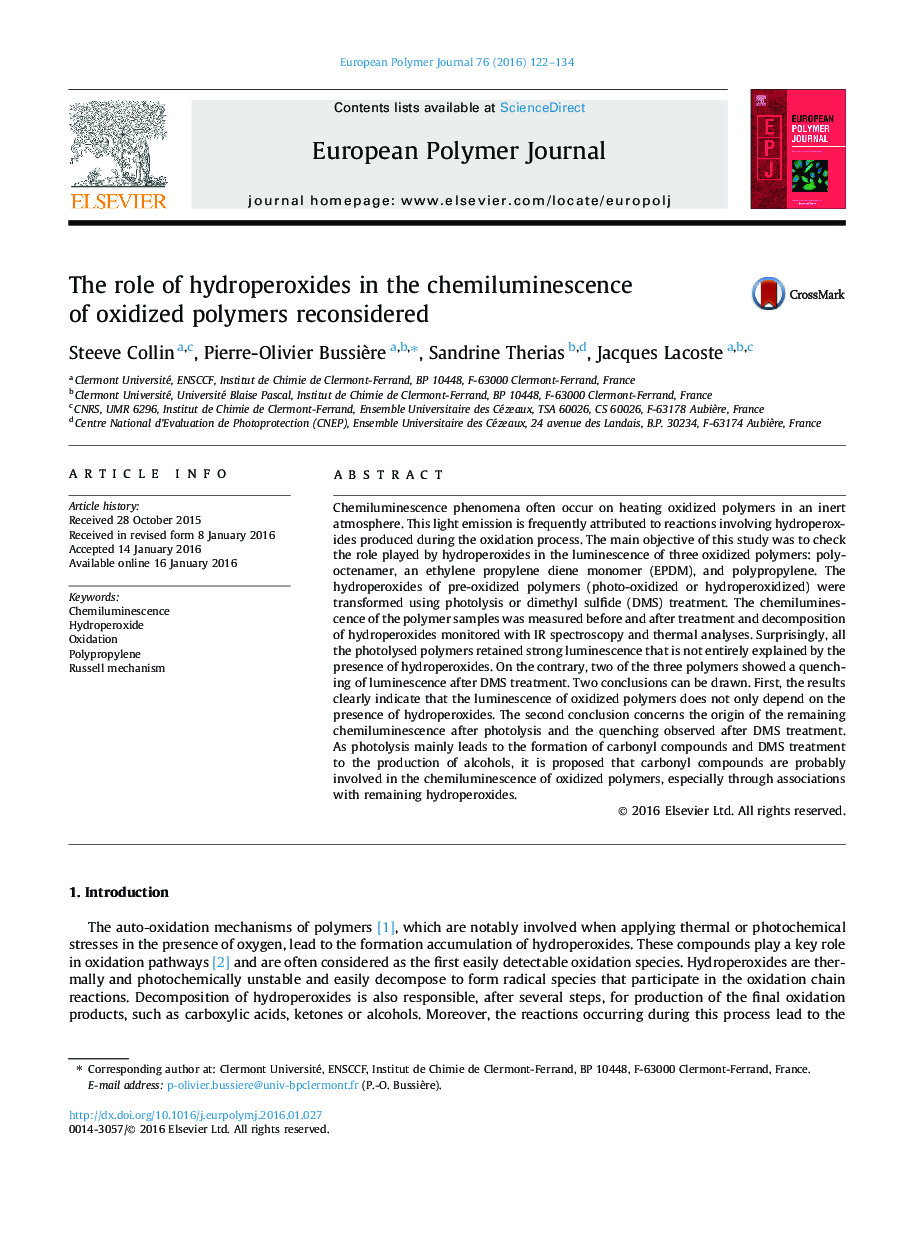| Article ID | Journal | Published Year | Pages | File Type |
|---|---|---|---|---|
| 1401515 | European Polymer Journal | 2016 | 13 Pages |
•The role of hydroperoxides in the luminescence of oxidized polymers was examined.•Hydroperoxides contained in oxidized polymers were selectively decomposed.•An oxidized polymer without any hydroperoxide can exhibit strong luminescence.•The remaining chemiluminescence could arise from carbonyl compounds.
Chemiluminescence phenomena often occur on heating oxidized polymers in an inert atmosphere. This light emission is frequently attributed to reactions involving hydroperoxides produced during the oxidation process. The main objective of this study was to check the role played by hydroperoxides in the luminescence of three oxidized polymers: polyoctenamer, an ethylene propylene diene monomer (EPDM), and polypropylene. The hydroperoxides of pre-oxidized polymers (photo-oxidized or hydroperoxidized) were transformed using photolysis or dimethyl sulfide (DMS) treatment. The chemiluminescence of the polymer samples was measured before and after treatment and decomposition of hydroperoxides monitored with IR spectroscopy and thermal analyses. Surprisingly, all the photolysed polymers retained strong luminescence that is not entirely explained by the presence of hydroperoxides. On the contrary, two of the three polymers showed a quenching of luminescence after DMS treatment. Two conclusions can be drawn. First, the results clearly indicate that the luminescence of oxidized polymers does not only depend on the presence of hydroperoxides. The second conclusion concerns the origin of the remaining chemiluminescence after photolysis and the quenching observed after DMS treatment. As photolysis mainly leads to the formation of carbonyl compounds and DMS treatment to the production of alcohols, it is proposed that carbonyl compounds are probably involved in the chemiluminescence of oxidized polymers, especially through associations with remaining hydroperoxides.
Graphical abstractFigure optionsDownload full-size imageDownload as PowerPoint slide
